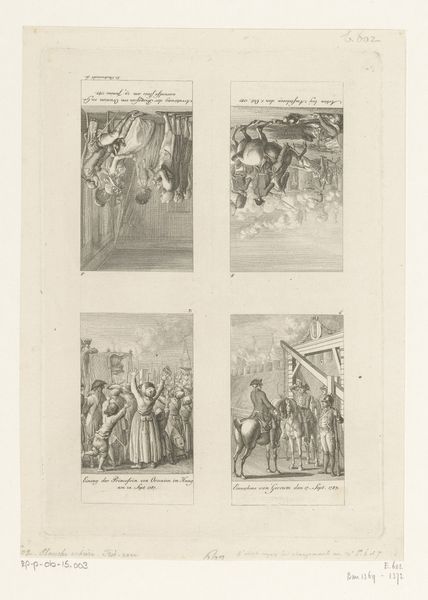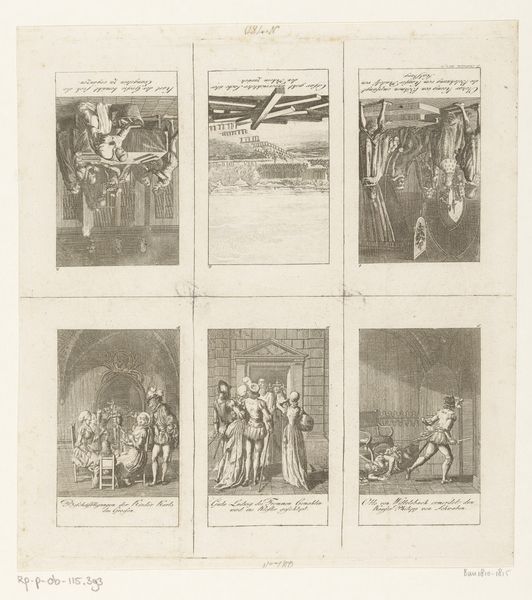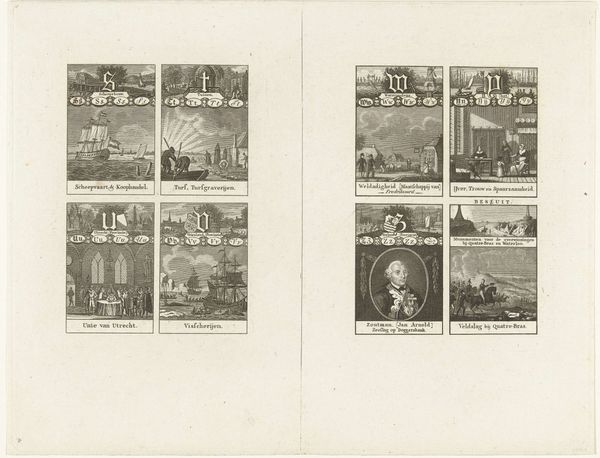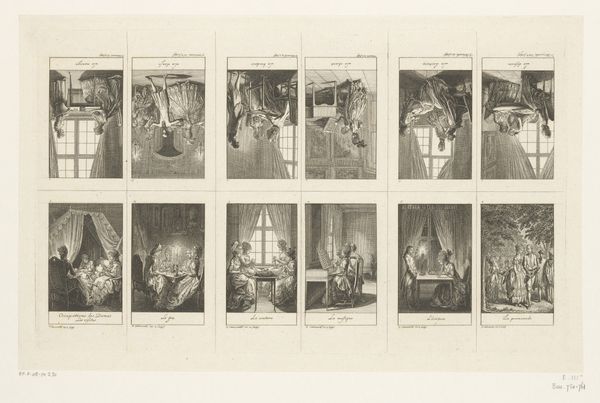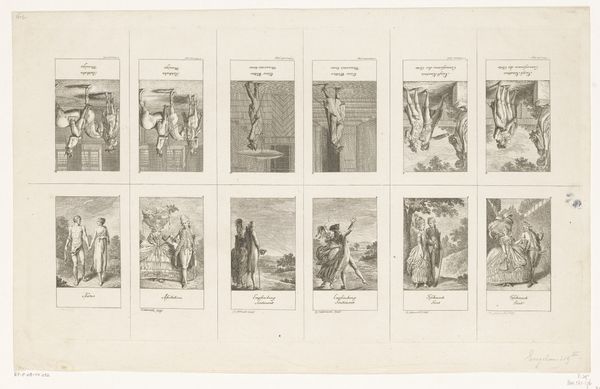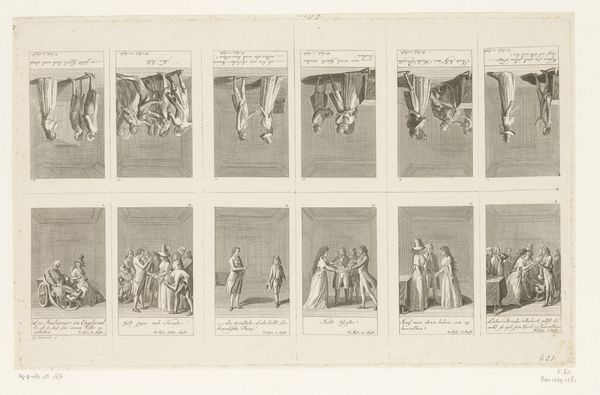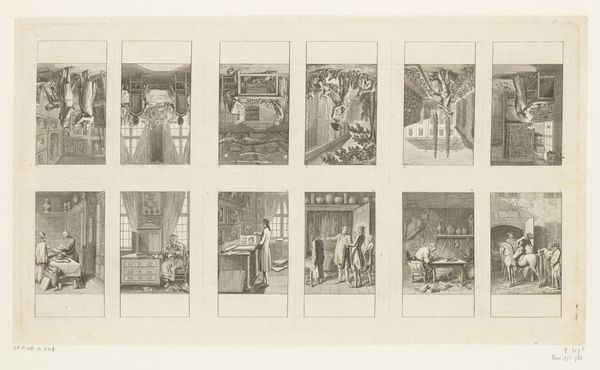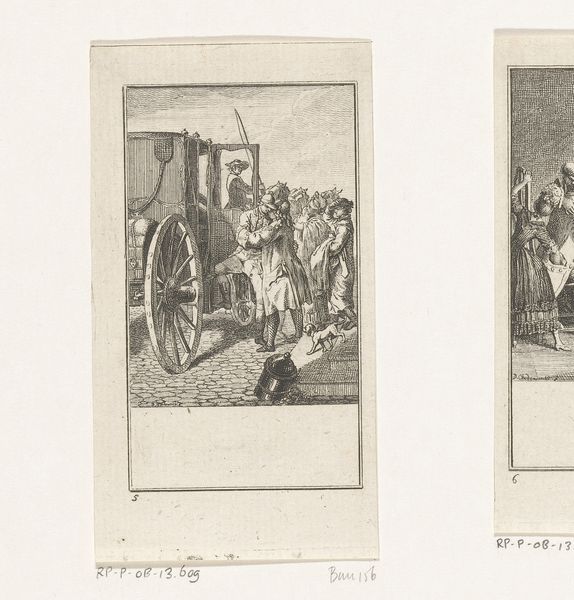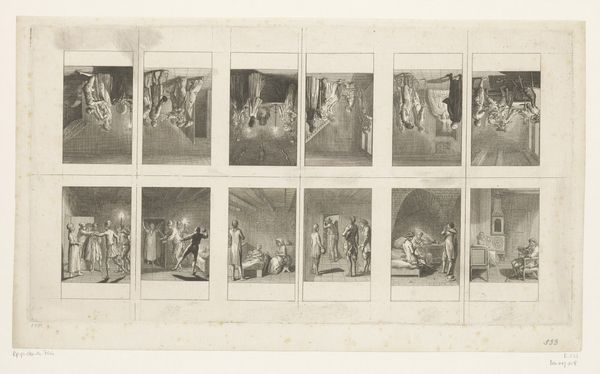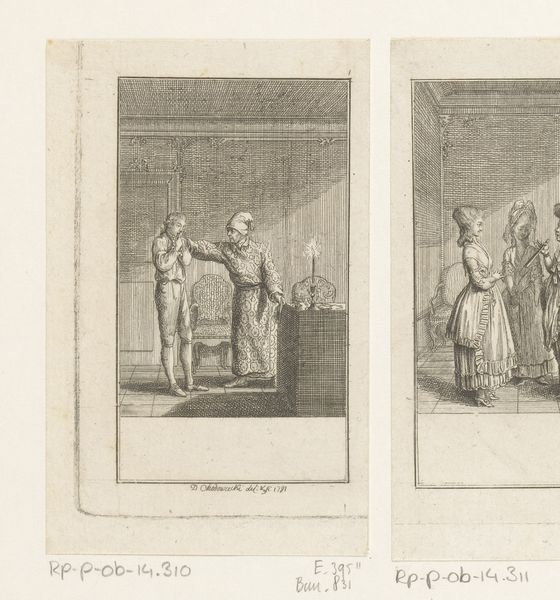
Twaalf voorstellingen uit de oudste, middelste en nieuwste geschiedenis 1793
0:00
0:00
drawing, print, paper, pencil, engraving
#
drawing
#
narrative-art
# print
#
paper
#
romanticism
#
pencil
#
history-painting
#
engraving
Dimensions: height 212 mm, width 375 mm
Copyright: Rijks Museum: Open Domain
Curator: Here we have Daniel Nikolaus Chodowiecki’s print from 1793, “Twaalf voorstellingen uit de oudste, middelste en nieuwste geschiedenis”—“Twelve Scenes from Ancient, Medieval, and Modern History." It’s currently held here at the Rijksmuseum. Editor: Twelve scenes indeed, almost like a sheet of postage stamps, each depicting some grand historical narrative. There’s a definite sense of order and precision here; everything feels so meticulously arranged. The limited palette creates a unified and rather subdued mood, don't you think? Curator: Absolutely. Chodowiecki was a master of conveying complex narratives through economical means. Each vignette draws from specific historical moments—consider the cultural significance of depicting moments from various epochs. It's a demonstration of shared historical memory. Editor: I see what you mean, though the Romanticism in the style downplays drama, choosing a rather restrained visual language. The composition in each little frame is quite clever, maximizing depth and storytelling within very limited space. Curator: And don’t overlook how his engraving technique creates a wealth of detail. Chodowiecki, deeply invested in the Enlightenment ideals, often used his art to convey moral or educational lessons. This compilation seems to highlight specific figures and events that served as pivotal examples for societal progress. Each tableau tells a small story about history, but overall they show a broader narrative about what mankind might achieve. Editor: It's interesting to consider the act of compilation. He doesn't want you to focus too intently on a single image but compels you to consider their relations. What does he intend you to see in their composition? Curator: That is just the perfect question! Maybe it has something to do with collective identity. The power of shared historical narratives really resonates through time. These engravings served as important visual resources. Editor: Well, looking closely at each individual piece certainly enhances the experience, though for me, reflecting on the formal relationships of these parts really elevates the artwork for me. Curator: Ultimately, experiencing it with a combination of those two perspectives creates the fullest picture. Editor: I couldn't agree more. A compelling demonstration of the visual economy of engraving, both as a collection and individually.
Comments
No comments
Be the first to comment and join the conversation on the ultimate creative platform.

